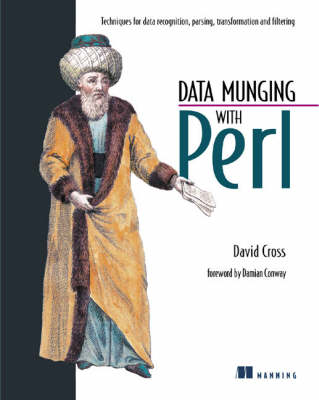Your desktop dictionary may not include it, but 'munging' is a common term in the programmer's world. Many computing tasks require taking data from one computer system, manipulating it in some way, and passing it to another. Munging can mean manipulating raw data to achieve a final form. It can mean parsing or filtering data, or the many steps required for data recognition. Or it can be something as simple as converting hours worked plus pay rates into a salary cheque.
This book shows you how to process data productively with Perl. It discusses general munging techniques and how to think about data munging problems. You will learn how to decouple the various stages of munging programs, how to design data structures, how to emulate the Unix filter model, etc. If you need to work with complex data formats it will teach you how to do that and also how to build your own tools to process these formats. The book includes detailed techniques for processing HTML and XML. And, it shows you how to build your own parsers to process data of arbitrary complexity.
If you are a programmer who munges data, this book will save you time. It will teach you systematic and powerful techniques using Perl. If you are not a Perl programmer, this book may just convince you to add Perl to your repertoire.
What's inside:
- Using CPAN modules like Number::Format, Date::Manip, Text::CSV_XS
- Making your code concise using Perl's special variables (like $/, $" and $_)
- Building data parsers using Parse::RecDescent
- Processing of HTML and XML
- ISBN10 1930110006
- ISBN13 9781930110007
- Publish Date 14 February 2001
- Publish Status Out of Print
- Out of Print 26 November 2014
- Publish Country GB
- Imprint Pearson Education Limited
- Format Paperback
- Pages 304
- Language English
